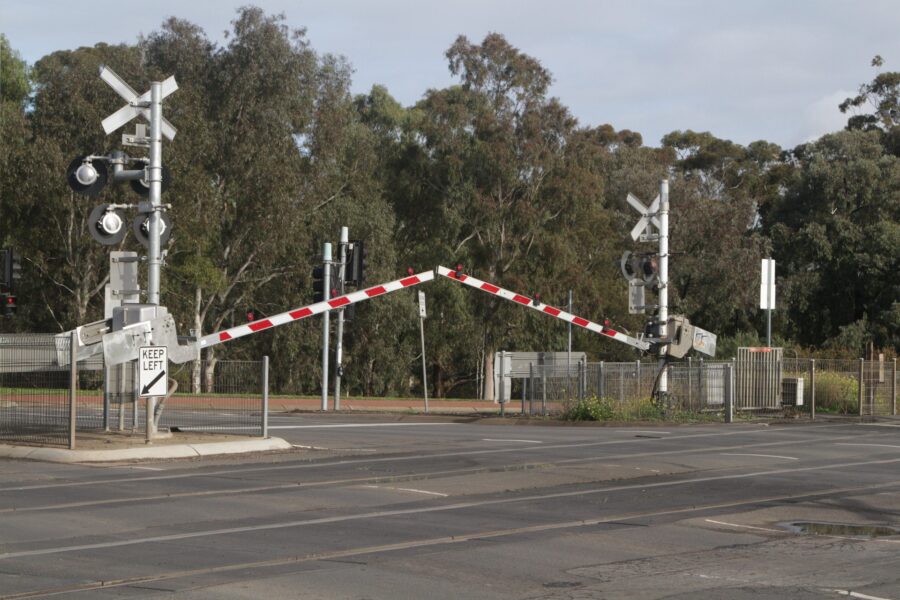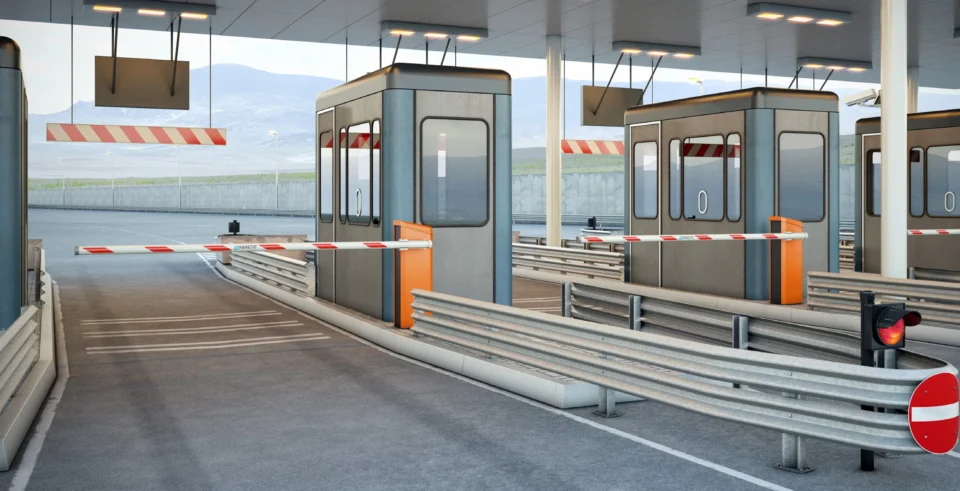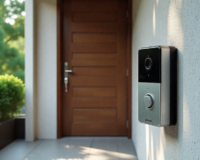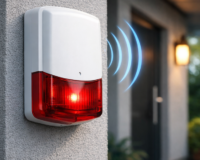Boom gates have long been a staple in managing access and controlling vehicular flow in various environments, from private facilities to large-scale public infrastructure. In cities like Melbourne, boom gates play a crucial role in improving safety and managing traffic in critical areas such as train stations, tollways, and airports. Their use in public infrastructure has evolved over time, becoming more sophisticated through the integration of advanced technologies, enabling seamless operation, enhanced safety, and optimized traffic management.
This article explores the increasing use of boom gates in Melbourne’s public infrastructure, the technologies driving their adoption, and their impact on safety, efficiency, and overall urban mobility.
The Role of Boom Gates in Public Infrastructure
Boom gates are primarily used to control and regulate the movement of vehicles and pedestrians in specific zones. In Melbourne, a rapidly growing urban environment with high traffic demands, managing vehicular and pedestrian flow is critical to ensuring safety and smooth operations. Boom gates, when implemented strategically, can enhance both the security of restricted areas and the efficiency of traffic movement in public spaces.
The key areas where boom gates have been widely adopted in Melbourne include:
- Train stations
- Tollways and expressways
- Airports
Each of these sectors has unique requirements for traffic control, and boom gates, when integrated with modern technologies, provide solutions tailored to meet the specific needs of public infrastructure.
Boom Gates at Train Stations

Melbourne has an extensive public transport network, with train stations serving as major transit hubs for thousands of passengers each day. Boom gates are integral to ensuring the safety and smooth movement of both trains and passengers, particularly at level crossings and station entrances.
Enhancing Safety at Level Crossings
One of the most critical applications of boom gates in Melbourne’s public infrastructure is at level crossings, where roadways intersect with railway tracks. Boom gates at these crossings are designed to lower automatically when a train approaches, preventing vehicles and pedestrians from crossing the tracks and reducing the risk of accidents.
Melbourne’s public transportation network includes numerous level crossings, and ensuring their safe operation is a top priority. Boom gates work in conjunction with signaling systems and automated sensors to provide reliable protection. The gates are lowered well before the arrival of a train, giving ample time for vehicles and pedestrians to clear the crossing.
Key Benefits of Boom Gates at Train Stations:
- Preventing Accidents: Boom gates reduce the likelihood of collisions between trains and vehicles or pedestrians by physically blocking the intersection before a train approaches.
- Improving Traffic Flow: Automated boom gates minimize the chances of congestion at level crossings by ensuring that traffic can resume as soon as the train has passed.
- Integration with Signaling Systems: Boom gates at train stations are integrated with advanced signaling and communication systems, providing real-time updates and controlling gate operations based on the train schedule.
Safety Innovations: Active Level Crossing Technology
Melbourne has been investing in active level crossing technology, where boom gates are equipped with advanced sensors and intelligent systems that can detect obstacles on the tracks or malfunctioning gates. These systems can alert train operators and control centers, allowing for immediate action to prevent accidents. This type of innovation is crucial in Melbourne’s high-density urban areas, where the intersection of road and rail traffic is most common.
Boom Gates on Tollways and Expressways

Tollways and expressways in Melbourne, such as the CityLink, are vital arteries that connect different parts of the city. Boom gates on these roads are not only important for controlling access but also play a pivotal role in maintaining the smooth flow of traffic and collecting tolls.
Toll Collection and Traffic Management
Boom gates on tollways are typically integrated with automated toll collection systems, such as RFID-based e-tag systems. As vehicles approach the toll booth, sensors detect the vehicle’s e-tag, and the boom gate automatically opens if the tag is valid, allowing for a seamless transaction without requiring the vehicle to stop.
In cases where manual payment is required, boom gates are used to ensure that drivers stop at the toll booth to complete the transaction. These boom gates help manage traffic flow and prevent unauthorized vehicles from accessing the tollway.
Key Benefits of Boom Gates on Tollways:
- Automated Access Control: Integrated with toll collection systems, boom gates ensure that only authorized vehicles can use the tollway, streamlining traffic flow.
- Efficient Toll Collection: By automating the toll payment process, boom gates help reduce delays and prevent traffic congestion at toll plazas.
- Safety: Boom gates prevent vehicles from entering tollways without paying, ensuring that traffic rules are enforced and reducing the risk of accidents.
Expressway Access Control
Boom gates are also used on expressways for lane management and controlling access to certain areas. For example, on-ramps to expressways can be controlled with boom gates to regulate traffic during peak hours or in response to specific events. By limiting the number of vehicles entering an expressway at any given time, boom gates help alleviate congestion and ensure smoother traffic flow.
Melbourne’s CityLink and EastLink tollways have implemented sophisticated boom gate systems to manage entry points effectively. These systems work in conjunction with electronic tolling to ensure that vehicles are processed quickly and that traffic moves efficiently, even during peak periods.
Boom Gates at Melbourne’s Airports

Airports are complex, high-security environments that handle large volumes of people, vehicles, and cargo every day. Melbourne’s Tullamarine Airport and other regional airports rely on boom gates to manage the flow of vehicles and enhance safety in parking areas, cargo zones, and restricted access points.
Managing Airport Parking Areas
Boom gates are commonly used to manage parking at airports, ensuring that only authorized vehicles can enter and exit parking facilities. In Melbourne, airport parking is a significant source of revenue, and boom gates play a key role in controlling access and collecting parking fees. Whether for short-term, long-term, or valet parking, boom gates integrated with automated payment systems provide a seamless experience for travelers and airport personnel alike.
Key Benefits of Boom Gates in Airport Parking:
- Revenue Collection: Integrated with automated payment systems, boom gates help manage the collection of parking fees efficiently.
- Traffic Flow Management: Boom gates ensure that vehicles are processed quickly, reducing congestion in parking areas and improving overall traffic flow at the airport.
- Security: Boom gates control access to parking areas, ensuring that only authorized vehicles can enter restricted zones.
Restricted Area Access Control
Airports have numerous restricted access areas, such as cargo terminals, maintenance zones, and airside operations. Boom gates are a crucial part of the security infrastructure in these areas, preventing unauthorized vehicles from entering sensitive zones. These boom gates are often integrated with RFID, smart card, or biometric access control systems, ensuring that only authorized personnel can gain entry.
In high-security areas, boom gates may also be equipped with automatic license plate recognition (ALPR) systems to further enhance security. ALPR technology allows the boom gate system to automatically detect and verify a vehicle’s license plate, ensuring that only pre-approved vehicles are granted access.
Enhanced Safety at Drop-Off and Pick-Up Zones
Boom gates are also used to regulate traffic in drop-off and pick-up zones at Melbourne’s airports. These zones can become highly congested, particularly during peak travel times. Boom gates help manage the flow of vehicles, ensuring that drivers adhere to time limits and avoid creating traffic bottlenecks.
Technology Driving Boom Gates in Public Infrastructure

The growing adoption of boom gates in public infrastructure has been fueled by technological advancements that enhance their functionality and reliability. Some of the key technologies driving the use of boom gates in Melbourne’s public infrastructure include:
1. RFID (Radio Frequency Identification)
RFID technology is widely used in tollway and airport parking systems. Vehicles equipped with RFID tags can pass through boom gates without stopping, as the system automatically detects the tag and processes payment or grants access.
2. Automatic License Plate Recognition (ALPR)
ALPR systems are increasingly being integrated with boom gates at airports and restricted-access zones. These systems automatically capture and verify a vehicle’s license plate, ensuring that only authorized vehicles can enter.
3. Biometric Access Control
For high-security areas such as airport cargo zones or train station control rooms, biometric access control systems can be integrated with boom gates. These systems use unique biological identifiers such as fingerprints or facial recognition to ensure that only authorized personnel can gain access.
4. Internet of Things (IoT) Integration
IoT technology is enabling boom gates to become smarter and more connected. In tollways and airports, IoT sensors can monitor traffic conditions in real time and adjust boom gate operations accordingly. For example, if congestion is detected, the system can optimize gate operation to manage traffic flow more effectively.
5. Real-Time Monitoring and Remote Control
Modern boom gate systems are often equipped with remote monitoring and control capabilities. Operators can monitor the status of boom gates in real-time and make adjustments as needed to ensure optimal traffic flow. This is particularly useful in large public infrastructure settings like airports and tollways, where traffic conditions can change rapidly.
Conclusion
Boom gates have become an essential component of Melbourne’s public infrastructure, offering a versatile solution for managing traffic flow and enhancing safety. Whether at train stations, tollways, or airports, boom gates integrated with advanced technologies such as RFID, ALPR, and biometric systems provide seamless access control, improved safety, and more efficient traffic management.
As Melbourne continues to grow and modernize its infrastructure, boom gates will play an increasingly important role in ensuring the smooth movement of people and vehicles across the city. With the integration of cutting-edge technologies, boom gates will continue to evolve, providing even greater benefits in terms of security, efficiency, and overall urban mobility.






